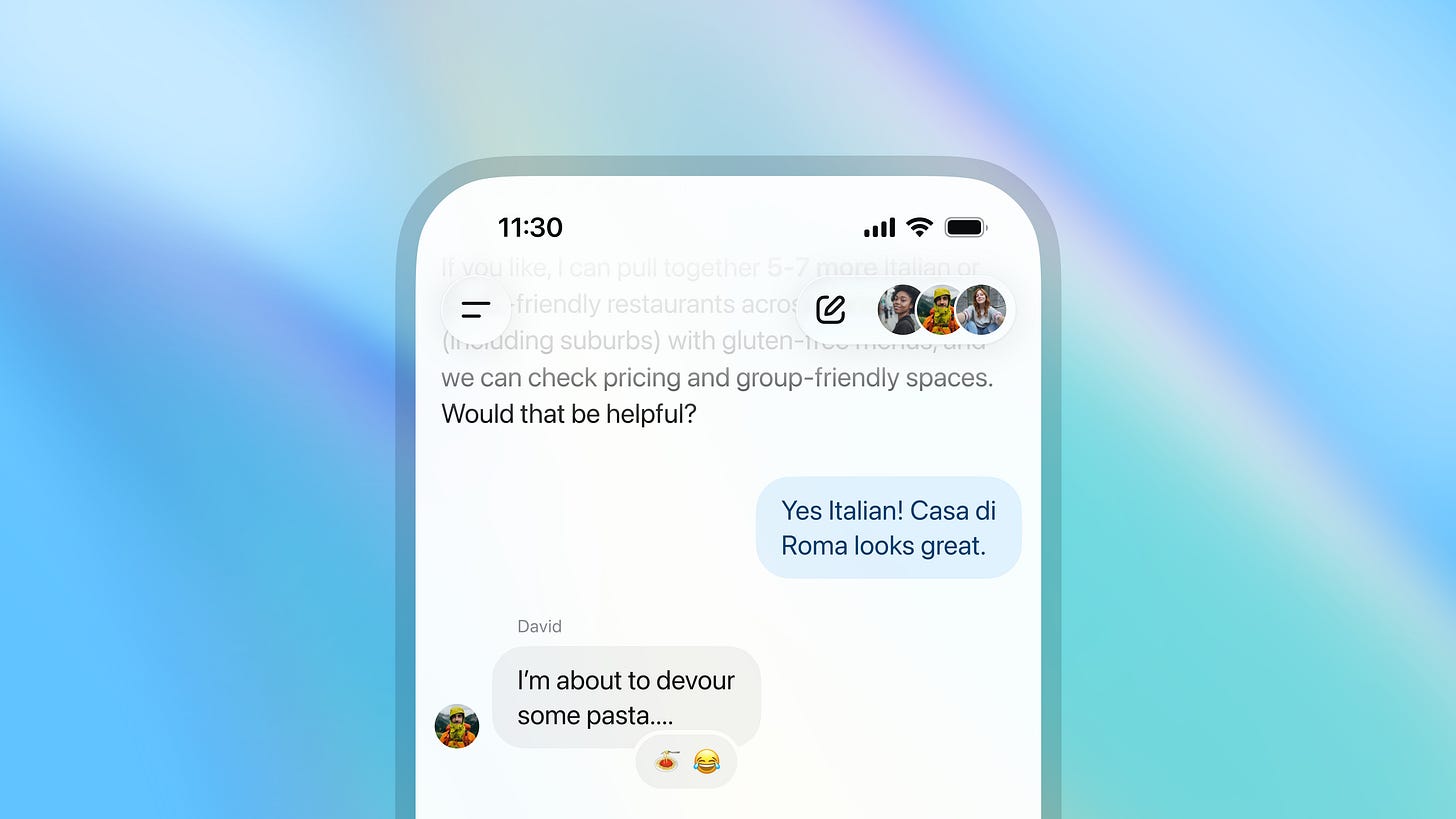A new way to collaborate in ChatGPT
Now you can invite other people into a shared conversation with ChatGPT where you can explore and create in the same space.
When we first introduced ChatGPT, it was designed for one-on-one interaction: one person chatting with one model. That’s powerful, but ChatGPT should help you accomplish any goal, and many of life’s most important goals happen with other people. The next transformation we need to make with ChatGPT is shifting from an entirely single-player experience to a multiplayer one when you want.
Early on, we saw that people wanted to share certain chats with people. They were sending screenshots, copying and pasting responses, or asking for ways to let others see how ChatGPT had helped them. That’s what led to shared links, which make it easy to show someone a conversation and let them continue it on their own. But sometimes you want to keep the chat going together, and that’s why we built group chats, which we’re rolling out globally to ChatGPT Free, Go, Plus and Pro plans starting today.
Now you can invite other people into a shared conversation with ChatGPT where you can explore and create in the same space. With group chats, you can collaborate with up to 20 people, with ChatGPT there to help answer questions, research topics, generate content, or organize next steps.
I’m excited about what this will make possible in many parts of people’s lives. Long before group chats, I’d been sharing some of the most insightful health-related conversations I had with ChatGPT with my husband, so now we can navigate those questions together. We heard from a college student who would screen-share ChatGPT while studying with friends. Now they can all join the same chat, ask questions, and learn together directly. Teams using ChatGPT business and enterprise often asked us for ways to collaborate in real time, and we’re excited to bring this feature to them soon too.
Group chats are also great for just having fun and staying connected. In my family, we have a tradition at dinner to come up with an invention we think should exist. Before ChatGPT, we used to write it down in a notebook with a very rough sketch. With ChatGPT, we explain the idea and ask it to generate images of our new product. Now my husband and I can have a group chat recording all the inventions our daughter dreams up.
We know that ChatGPT is a deeply personal space for many people, and we don’t want to change that. Group chats are optional and separate from your private conversations. Your personal ChatGPT memory isn’t shared in group chats, and no new memories are created from them. You directly invite others by sharing a link, and you have to accept an invitation to join. You can also leave a chat or remove someone from a chat at any time.
We designed group chats with clear boundaries between what’s shared and what’s not, so they live in their own section in the sidebar. When you add someone to an existing chat, ChatGPT will automatically create a new copy in your group chat section so your private conversations stay separate. Our parental controls also let parents or guardians turn off group chats entirely.
As we expand what ChatGPT can do, our focus is to build on what people love about it, while making it much easier for anyone to use the full potential of AI to accomplish their goals. We’re starting to make ChatGPT more proactive through features like Pulse, which provides personalized updates based on topics it’s researched on your behalf. We’re making it more connected with apps inside of ChatGPT and our new browser, ChatGPT Atlas, which brings ChatGPT with you across the web. Now, we’re making ChatGPT more collaborative with group chats.
We’ll keep listening to feedback about how people want to use ChatGPT both individually and as a way to do more with others. I’m excited to build a future where AI isn’t isolating, but a catalyst for bringing people together around shared goals. As group chats roll out over the coming days, let us know what you think!

Fidji,
Ton post m’a rappelé une idée que je garde en tête depuis longtemps :
une IA qui ne remplace personne, mais qui coordonne tout le monde.
Imagine un espace commun où :
👉les partis politiques posent leurs arguments,
👉les grands pollueurs exposent leurs contraintes,
👉les ONG partagent leurs urgences,
et où chacun peut confronter ses priorités sociales ou économiques,
…avec une IA qui aide à construire le compromis optimal :
faire progresser le social, maintenir une économie solide
et protéger une planète qu’on abîme un peu plus chaque jour.
Si l’IA peut nous aider à aligner tout ça,
alors oui, elle deviendra un vrai catalyseur collectif.
I like how quickly your company innovates. Makes me cleverer!